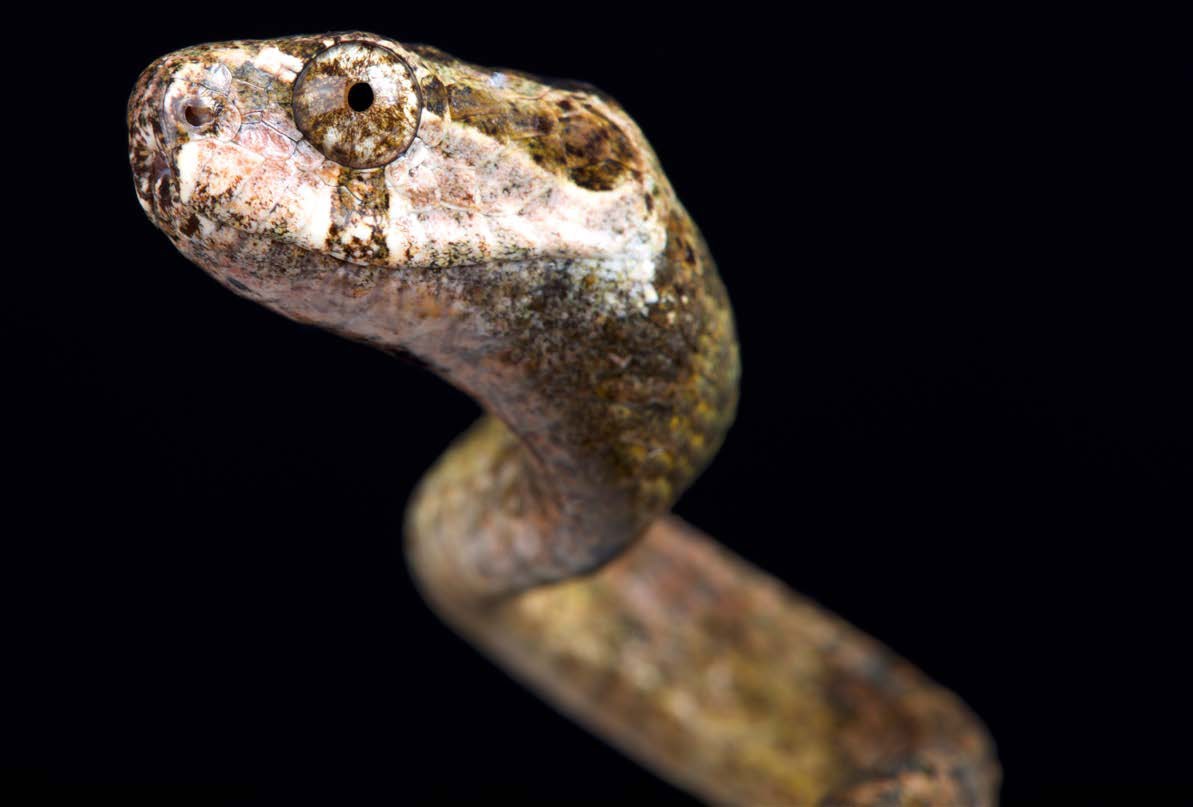
Aplopeltura boa.
Photo courtesy reptiles4all/
www.shutterstock.com These particular snakes are found both in the New World, and also in southern Asia, where approximately 16 species of these coloubrids are recognized, forming the subfamily Pareinae. Their anatomy helps to define them, with long, slender teeth present in their mouths, but their classification is not straightforward, partly because not all snail-eaters actually feed exclusively on gastropods, nor are they all arboreal in their habits.
The core members of this complex are the members of the genera Aplopeltura, Pareas and Dipsas. I personally would like to add Duberria and Sibon into this group, but systematic reviews may not agree. Nevertheless, all of these snakes are extremely rarely available at present, and their habits, including their behaviour in the wild, are poorly understood. I hope this article can change some of that, and introduce more people to this fascinating group of reptiles. They make a very interesting addition to any collection.